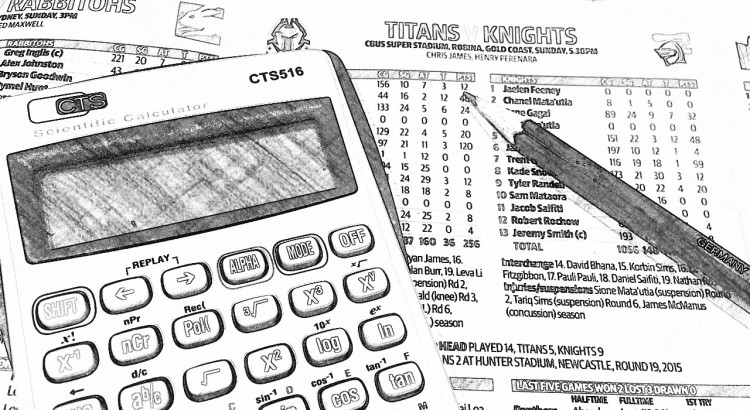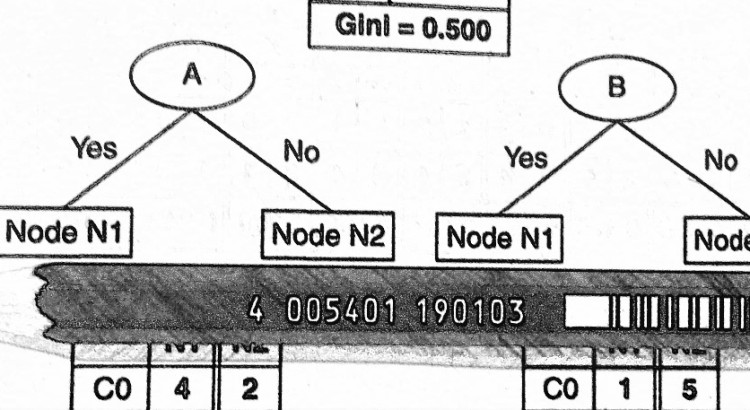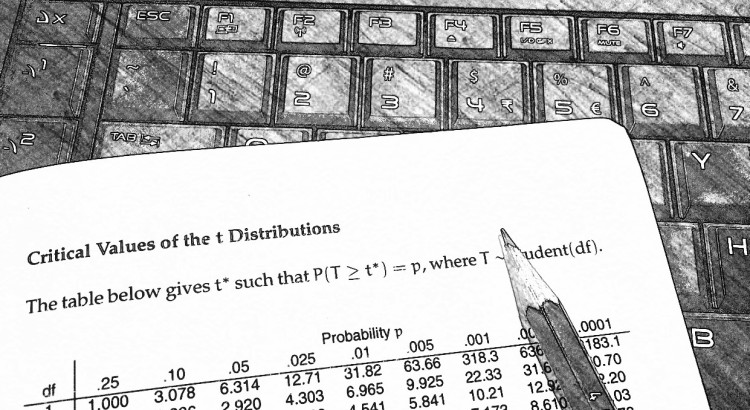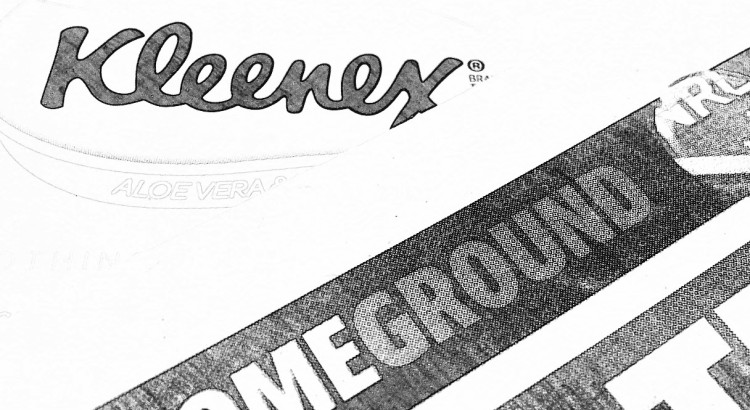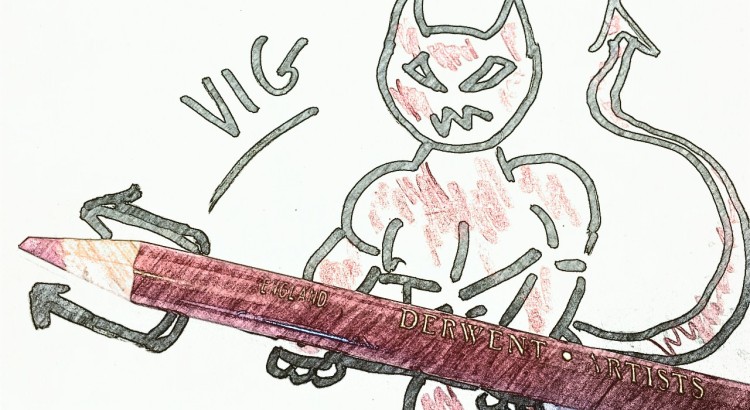Hedging with ‘free’ bets
maxwellAI
6/12/2016
Headline
Ever wondered how you should spend that free/bonus bet your bookmaker has given you? Should you place it on a long odds team, on the favorite, or can you use it to hedge your bets?
Find out below!
Introduction
From time to time, a bookmaker may offer you a ‘free’ (‘bonus’) bet under some promotional offer. So if you have ‘generous’ bookmaker, what do you do with that free bet? Most of us might just stick it on a long shot in the hope of a big payout, or maybe we will just use it as part of our normal staking strategy or (if you’re boring) you might use it to hedge your bet/s to gaurentee a profit. I was actually recently given a free bet, and I had an opportunity to use it to guarantee a profit on a recent (round 14) NRL match. Since this might be a relatively uncommon strategy among casual punters, I thought I might share how it works!
Hedging with a free bet
As I said in the introduction I recently had an opportunity to hedge on a NRL match to garetuentee myself a profit on the outcome. I’ll briefly explain the scenario.
I was given a free bet ($100) by a bookmaker under the condition that:
- I used the bet before 01-July-2016 & that it could only be used on a single match (IE I had to place the entire $100 amount on the outcome of an event)
I can’t quite figure out why I was given a free bet, but from time to time I presume as a ‘new’ punter in the system they give me free bets to encourage me to bet more often. I’m sure its all part of the bookmakers sophisticated customer profiling etc but I have not ‘cracked’ the code on when I might receive a free bet. It would be an interesting exercise to get a few peoples betting history (including when free bets were offered) to see if I can predict what is driving free bet offers.. but that’s for another time (PS if anyone wants to share their bet history/profile with me let me know!). Anyway, I diverge.
So now that I had my free bet, what was I going to do with it? Well the temptation is just to go chuck it on a really long odds match and hope it pays off (after all its a ‘free’ throw away bet right?). And trust me I was actually tempted just to do this. However I thought for moment, “surely I can be a little smarter than that” and ultimately chose to use to hedge the free bet to gaurentee myself a small profit. This isn’t a very romantic way to bet (I would prefer to tell the story about the time I used my free bet to back a horse at 1000:1 and landed a massive pay day), but at least I made a profit..
I have already previously discussed hedging in detail so I wont dwell on it too much, suffice to say that its a betting technique which involves (in our case) placing bets on both teams to guarantee a profit. Opportunities enabling you to do this arise when the odds of your initial stake favorably change before a match starts or during live play. However an opportunity to hedge also exists if you have a ‘free’ bet.
How it works
Here’s how it works (using my real world example):
Taking a look at the odds of matches for round 14, I can calculate the potential gaurenteed profit I will make under a few assumptions.
My aim is to match the profit I would get if I staked the free bet on my preferred team. For example if I put the $100 free bet on a team at 1.40 odds, my potential profit is $40. So I want to determine what amount of money I need to put on the opposing team to match this profit. Then I want to determine if my overall profit is positive. If it is then its a good match to hedge on.
So lets take a look at how this works on the actual match I staked on.
I chose to use my $100 free bet to stake on the Broncos playing at home to beat Canberra in round 14.
The Broncos were at odds of 1.33 while Canberra were at odds of 3.45
If I use the $100 free bet to stake on Broncos my potential profit is $33 ($100*1.33 - $100).
If I want to ‘match’ this profit by betting on Canberra I would need to put $13.75 on Canberra to win. ($13.47*3.45 - $13.47 = $33)
So now; given I have placed a $100 (free) bet on Broncos and 13.75 bet on Canberra then I am gaurenteed to profit $19.53. Yup that’s right, no matter who wins I get $19.53 profit. Now I don’t even have to watch the game and I can go off and buy that ‘special’ something I’ve always wanted….
But in all seriousness at least its a profit, and I only had to outlay $13.47 to gaurentee it.
You can double check the math if you like:
I put $13.47 on Canberra to win @ 3.40 (total actual outlay $13.47).
I put $100 (free bet) on Broncos to win @ 1.33 (total actual outlay = $0.00 because its a free bet)
If Broncos win I get (1.33*100-100)-$13.47 = $19.53
If Canberra wins I get (3.4*13.47)-$13.47 = $19.53
So there you go! As demonstrated you can use that free bet to guarantee yourself a profit (I actually did)
Math
Here’s the step by step guide (with formula) to determine how much to stake on the opposing team, and how much overall profit you will make using this strategy. You can use the amount of overall profit to determine which match is the best value to hedge on
- Determine the:
free bet amount (s1)
odds of the team which free stake will be used (o1)
odds of the opposing team (o2)
- Calculate the expected profit (p) from the free bet stake
- p = s1*o1 - s1
- Calculate the amount of money needed to bet on the opposing team in order to match the expected profit from the free bet stake (s2)
- s2 = p/(o2-1)
- Calculate the total expected profit (tp) from the hedge betting
- tp = p-s2
- Use the hedging strategy to stake on the game with the highest total profit (tp).
Using my real world example:
s1 = $100
o1 = 1.33 (Odds on Broncos)
o2 = 3.4 (odds on Canberra)
p= $100*1.33-100 = $33
s2 = 33/(3.45-1) = $13.47
tp = $33- $13.47 = $19.53
This was the highest tp of all matches in round 14 (at the time of betting) so was my preferred hedging stake.
If we wanted to quickly look at the best free bet hedging opportunities we can tabulate and graph to get a bit of an idea of how this works.
Assuming a $100 free bet and a completely fair market free of vig/overround; lets tabulate and plot the total potential profit of odds from 1.0 through to 2.0:
| o1 | o2 | s1 | p | s2 | tp |
|---|---|---|---|---|---|
| 1.00 | Inf | 100 | 0 | 0.00 | 0.00 |
| 1.05 | 21.00 | 100 | 5 | 0.25 | 4.75 |
| 1.10 | 11.00 | 100 | 10 | 1.00 | 9.00 |
| 1.15 | 7.67 | 100 | 15 | 2.25 | 12.75 |
| 1.20 | 6.00 | 100 | 20 | 4.00 | 16.00 |
| 1.25 | 5.00 | 100 | 25 | 6.25 | 18.75 |
| 1.30 | 4.33 | 100 | 30 | 9.00 | 21.00 |
| 1.35 | 3.86 | 100 | 35 | 12.25 | 22.75 |
| 1.40 | 3.50 | 100 | 40 | 16.00 | 24.00 |
| 1.45 | 3.22 | 100 | 45 | 20.25 | 24.75 |
| 1.50 | 3.00 | 100 | 50 | 25.00 | 25.00 |
| 1.55 | 2.82 | 100 | 55 | 30.25 | 24.75 |
| 1.60 | 2.67 | 100 | 60 | 36.00 | 24.00 |
| 1.65 | 2.54 | 100 | 65 | 42.25 | 22.75 |
| 1.70 | 2.43 | 100 | 70 | 49.00 | 21.00 |
| 1.75 | 2.33 | 100 | 75 | 56.25 | 18.75 |
| 1.80 | 2.25 | 100 | 80 | 64.00 | 16.00 |
| 1.85 | 2.18 | 100 | 85 | 72.25 | 12.75 |
| 1.90 | 2.11 | 100 | 90 | 81.00 | 9.00 |
| 1.95 | 2.05 | 100 | 95 | 90.25 | 4.75 |
| 2.00 | 2.00 | 100 | 100 | 100.00 | 0.00 |
We observe that in a fair market the maximum profit of $25 is achieved when you put a $100 free bet on odds of 1.5 and $25 on the opposing team at odds of 3.00. Profit declines from this maximum as you move lower towards 1.2 or higher towards 2.0. At odds of 2.00 no profit is achieved. While this is the theoretical maximum in a fair market, the reality is that the ‘best’ value hedging opportunity will vary based on the vig/overround offered for the match, and the vig/overround bias. To refresh your memory a bookmakers market is never fair as the probabilities they offer on each team will add up to over 1.00.
For example, in a fair market assuming even probability (50%) that each team will win, then the odds offered should be 2.00 on each team.
In the bookmakers market when the odds are ‘even’ instead of being set at 2.00 you will observe that they might be at 1.92.
For example, the opening odds for the round 14 match up between the Sharks and Cowboys were 1.92 each. This is equivalent to an implied chance of 52% chance that each team will win. This adds up to 104% so the bookmaker has a 4% overround.
So unfortunately you can’t use 1.50 exclusively, you will need to do the calculation to determine which match has the highest profit potential like I did.
Lets take the odds of the round 14 matches* and see how the profit is affected by the vig/overround. We will also order the odds lowest to highest.
NB these odds are slightly different to the odds determined at the time of my stake - these are just the latest odds I had in my database
| favorite | favorite.odds | non.favorite | non.favorite.odds | vig | overround | s1 | p | s2 | tp |
|---|---|---|---|---|---|---|---|---|---|
| Brisbane Broncos | 1.32 | Canberra Raiders | 3.50 | 0.041 | 0.043 | 100 | 32 | 12.800 | 19.200 |
| New Zealand Warriors | 1.32 | Newcastle Knights | 3.50 | 0.041 | 0.043 | 100 | 32 | 12.800 | 19.200 |
| Canterbury Bulldogs | 1.38 | St George Illawarra Dragons | 3.15 | 0.040 | 0.042 | 100 | 38 | 17.674 | 20.326 |
| Melbourne Storm | 1.42 | Sydney Roosters | 2.95 | 0.041 | 0.043 | 100 | 42 | 21.538 | 20.462 |
| Penrith Panthers | 1.47 | Manly Sea Eagles | 2.75 | 0.042 | 0.044 | 100 | 47 | 26.857 | 20.143 |
| South Sydney Rabbitohs | 1.58 | Wests Tigers | 2.45 | 0.039 | 0.041 | 100 | 58 | 40.000 | 18.000 |
| Gold Coast Titans | 1.73 | Parramatta Eels | 2.15 | 0.041 | 0.043 | 100 | 73 | 63.478 | 9.522 |
| Cronulla Sharks | 1.92 | North Queensland Cowboys | 1.92 | 0.040 | 0.042 | 100 | 92 | 100.000 | -8.000 |
We can see that odds of 1.5 no longer represents the maximum profit but rather, maximum profit is achieved at odds of ~1.42. You can also see that the vig/overround does actually vary slightly between matches which does play into the potential profit. So the bottom line is that to maximize your profit you need to make sure that you do your math in the market you want to apply your hedging stake in.
Finally, although I said that this hedging strategy guarantees you a profit… there is a slight caveat. In the event of a draw I would have lost my free bet and also lost my $13.47…. however draws are a relatively rare beast..
Also as a final disclaimer in reality I had to put $14 on Canberra to win, as I wasnt able to put fractional bets on.. so my actual profit was very slightly lower
